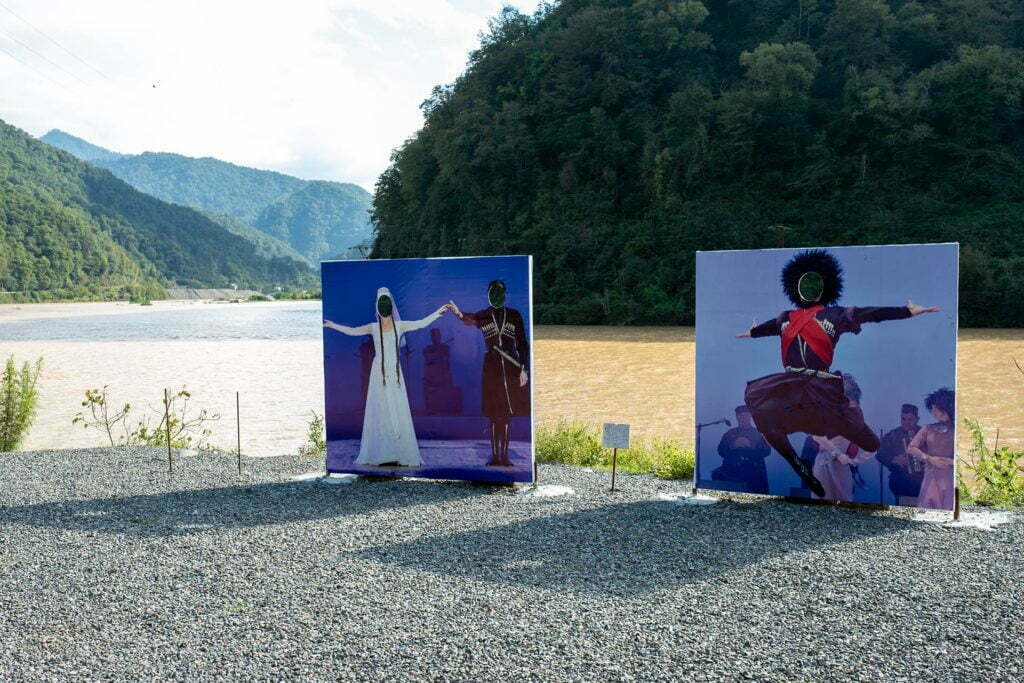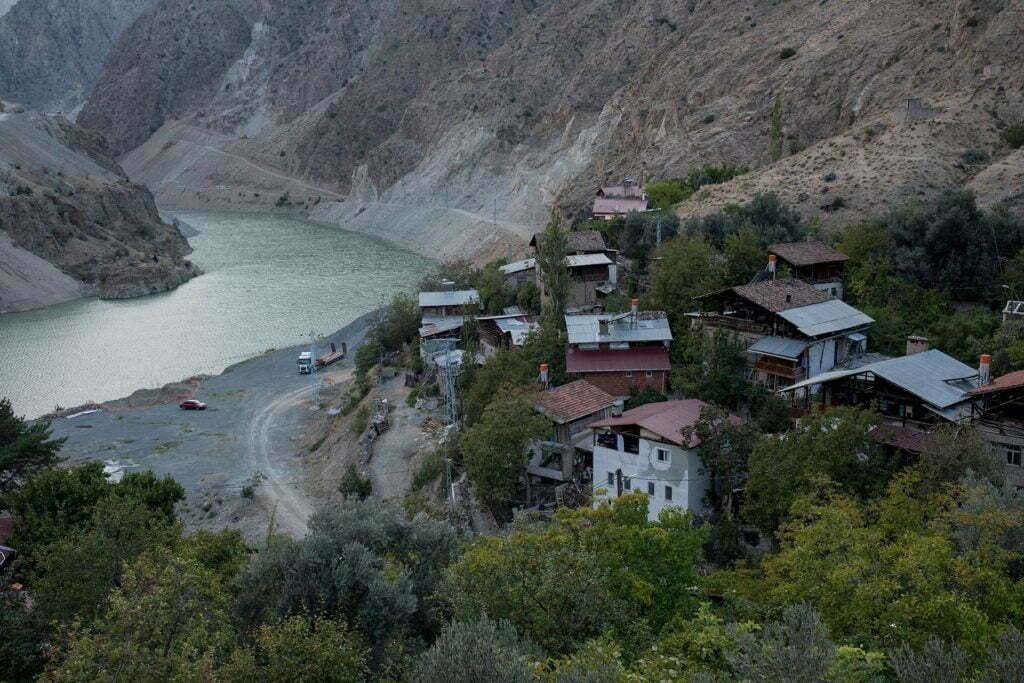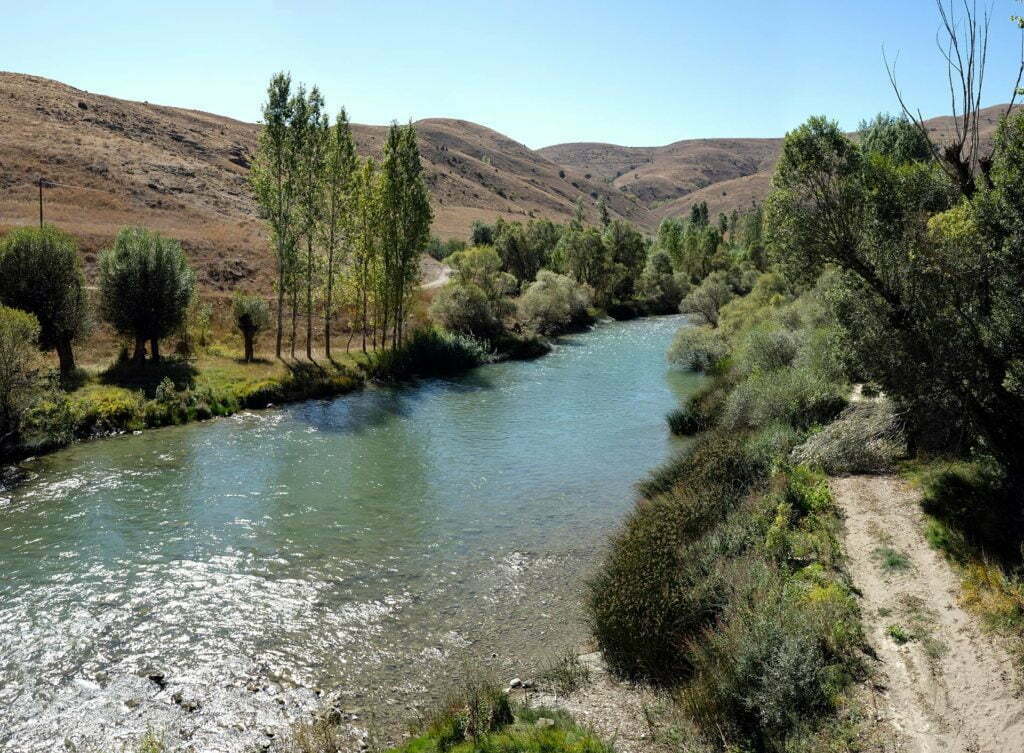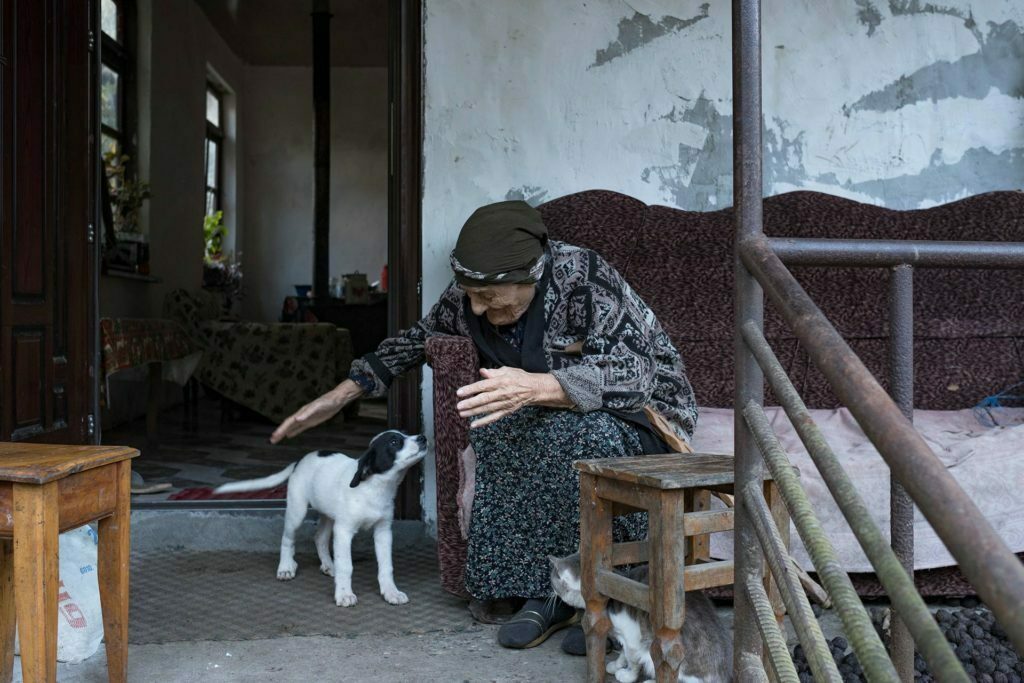SİNAN ERENSÜ
Çoruh, one of the world’s fastest flowing rivers, and its home basin have lately been undergoing massive changes. At the core of this transformation is a mega infrastructure program by the name of the ‘Çoruh Energy Plan’, within the scope of which a total of fifteen large-scale dams are planned to be built on the Çoruh River (ten in the main basin, five on its tributaries). While generating energy for the country, these dams – some of which are complete, some still in construction, others in planning stage – inundate settlements and agricultural fields in the places where they are built, alter local climates, put wildlife at risk and transform a gushing river into a long, tapering, sluggish lake.
As the Center for Spatial Justice (Mekanda Adalet Derneği – MAD), we tracked this sluggish turn in the Çoruh as an interdisciplinary research team of 10, over a period of eight days, in September 2019. To enrich our field study during which we trekked the river from source to mouth, collecting stories of human and nature, we conducted interviews with various experts. We hope that this comprehensive basin study by DereTepe.org contributes to the struggle for environmental justice and supernatural storytelling.

Perhaps the transformation the Çoruh Basin is undergoing is flying under the radar for most of us due to its relatively small population size and peripheral location, but what the Çoruh and inhabitants of the Çoruh Basin are experiencing is, in fact, a prototype of the widespread ecocide and ecological crisis inflicting the whole country – which is characterized by rapidly disintegrating rural life, living areas facing destruction, desperate negotiations ongoing over these sites, the dismay of local populations finding themselves pitted against contracting or proxy companies, rising ecological struggles and their limitations, the loss of cultural sites and the sense of being robbed of one’s roots resulting from this, forced displacement, and a worry for the future brought by a deep sense of uncertainty seeping into every soul and mind in sight…
The Çoruh is a mighty river connecting three provinces. Born in the Mescit Mountain located in the province of Erzurum, the Çoruh then follows an East-West trajectory to draw a 270-degree arc through the province of Bayburt, turning to continue its path in a West-East trajectory. Running along the southern slopes of the Kaçkar Mountains, it then curves northward towards the Black Sea at the first deep enough valley it finds, entering the province of Artvin in the vicinity of Yusufeli.

However, as is common knowledge, nature knows no borders. In this sense, the Çoruh is a transboundary river. Its journey that begins in the Mescit Mountains ends in Georgia. Only 25 kilometres of the 438-kilometre-long course of the Çoruh runs on Georgian soil. It is in this short distance that the river flows out of narrow valleys to reach a wide delta. The Çoruh in Georgia, i.e. Ch’orokhi (ჭოროხი), also provides us the answer as to why this massive transformation in the Çoruh Basin has waited until this moment to take place. The 25 kilometres in question lay within the boundaries of the Union of Soviet Socialist Republics (USSR) until 1989. Unwilling to cross its powerful neighbour, Turkey had to delay the implementation of the Çoruh Energy Plan – which, in fact, dates back to the 1950s – until after the dissolution of the USSR. The construction of the Muratlı Dam, which is the first on the Çoruh river and is at a walking distance to the Georgian border, was started in 1999. This natural and historical point of passage between the two countries has long been out of use. Those who wish to follow the Çoruh across the border now have no choice but to take a 98-kilometre-long detour across the Sarpi Border Checkpoint to reach the Maradid Village, which is actually a mere 2 kilometres away from the Muratlı Village. This distance that we travelled as the MAD team not only proved to us the continuity of the Çoruh, but also that political ecological processes and environmental struggles also know no bounds or borders.

In this study, you will hear about dams built by Turkish companies in Georgia, the troubles caused by these dams in border villages, and how experiences of displacement resemble each other in both countries, from the Georgian counterparts of the story.
Undoubtedly, all of this transformation does not take place in the space of one day. Rumours span decades, and the transformation itself does not at all unfold in a programmatic and predictable manner. The destruction of the Çoruh manifests as an act of violence in slow-motion. Neither the plans for the dams, nor details regarding new settlement areas for those being displaced, nor terms for who is eligible for compensation and under what conditions are laid out clearly. All of these are subject to change, negotiation and last-minute revisions. It is almost impossible to access reliable information without some kind of contact or intermediary, which creates a situation where rumours suddenly turn into realities, realities into hope and aspirations for wealth, aspirations and dreams into nightmares, nightmares into desperation and all of them in time give way to a deep sense of uncertainty. Uncertainty is perhaps a reality of the Çoruh that has been felt most palpably throughout our field study. The uncertainty regarding what will be done and when and how it will impact people’s lives leaves whole populations defenceless and veritably paralyzes social life.

Another one of the realities of the Çoruh directly impacted by uncertainty is protest. Various forms and levels of protest exist against the ecocide taking place in the region. This protest is sometimes manifested through a concrete and sustained civil society organization such as the Green Artvin Association (Yeşil Artvin Derneği), while other times it is limited to the efforts of the local head (mukhtar) of a small village or is expressed through the government in power and its local branches. Whatever the form, protest always carries enormous power. This power does not only bring together politically disparate elements and affect local politics, but also engenders a brand new passion and attachment to the region, reconnecting people who take part in the struggle to the area and the land with strong bonds. On the other hand, while uncertainty exacerbates protest, it may also render struggles precarious – and precarious movements tend to become more susceptible to exhaustion, defeat and capitulation.

One of the places where struggle, protest, precariousness and capitulation are perhaps most inextricably intertwined is Yusufeli. This district and what it has experienced in the last decade as a place that shall be submerged underwater with the completion of the Yusufeli Dam – the most important leg of the Çoruh Energy Plan – forces us to think about the politics of destruction. How is a struggle waged? How is defeat accepted? How does one negotiate on destruction, and is anything ever gained from such negotiations? In Yusufeli, we discuss these questions with the most prominent figures in the town’s political landscape and witness a story of destruction that shall find more of a place on the country’s agenda in years to come.
Protest is, of course, meaningful, sustainable and effective only when it is collective. But as important as the communities that protest are the individuals that act as igniters, leaders and carriers of the protest. In this sense, the Çoruh offers us a variety of different portraits. These portraits on the one hand demonstrate the diversity of modalities of protest the people of the region engage in against ecocide, and on the other inspire us. An artist who started a world-class museum in his village, a former expat who returned home with all his acquired experiences to work the land as a small-scale farmer in the Bayburt countryside, and a woman activist rushing to all the environment-related issues in the region… The intersections of these portraits of people with different motivations and utterly dissimilar backgrounds show us just how broad-ranging our shared commons actually is.

This study we have carried out as the MAD team traces the ecocide and ecological destruction inflicting the various valleys and basins of our land in differing forms and intensities, and hears the story of this destruction directly from those who are experiencing it. But it is not as a lament that we listen to the hill-and-dale stories of the Çoruh. We aren’t in the aftermath of destruction, simply shedding tears at the ruin behind us. For the destruction is also not yet complete. The Çoruh continues to give hope to those insisting to stay and even to those attempting to return. Those who have been able to re-establish themselves in their village, their valley and their fields after a short break allow us to discuss “what kind of a return to the village” is possible. Even more importantly, though, we hope these narratives of the Çoruh to function as building blocks of an effort to regenerate life in the wake of destruction, an ecological restoration we know we will soon have to undertake. It is for this reason that it becomes particularly crucial to keep a proper record of destruction. For our field research shows us that comprehensive ecological destruction as has befallen the Çoruh Basin can only be overcome with a brand new, more just, more ecological, and more democratic vision – and not with the promise of turning the clocks back to how things were immediately prior to destruction.